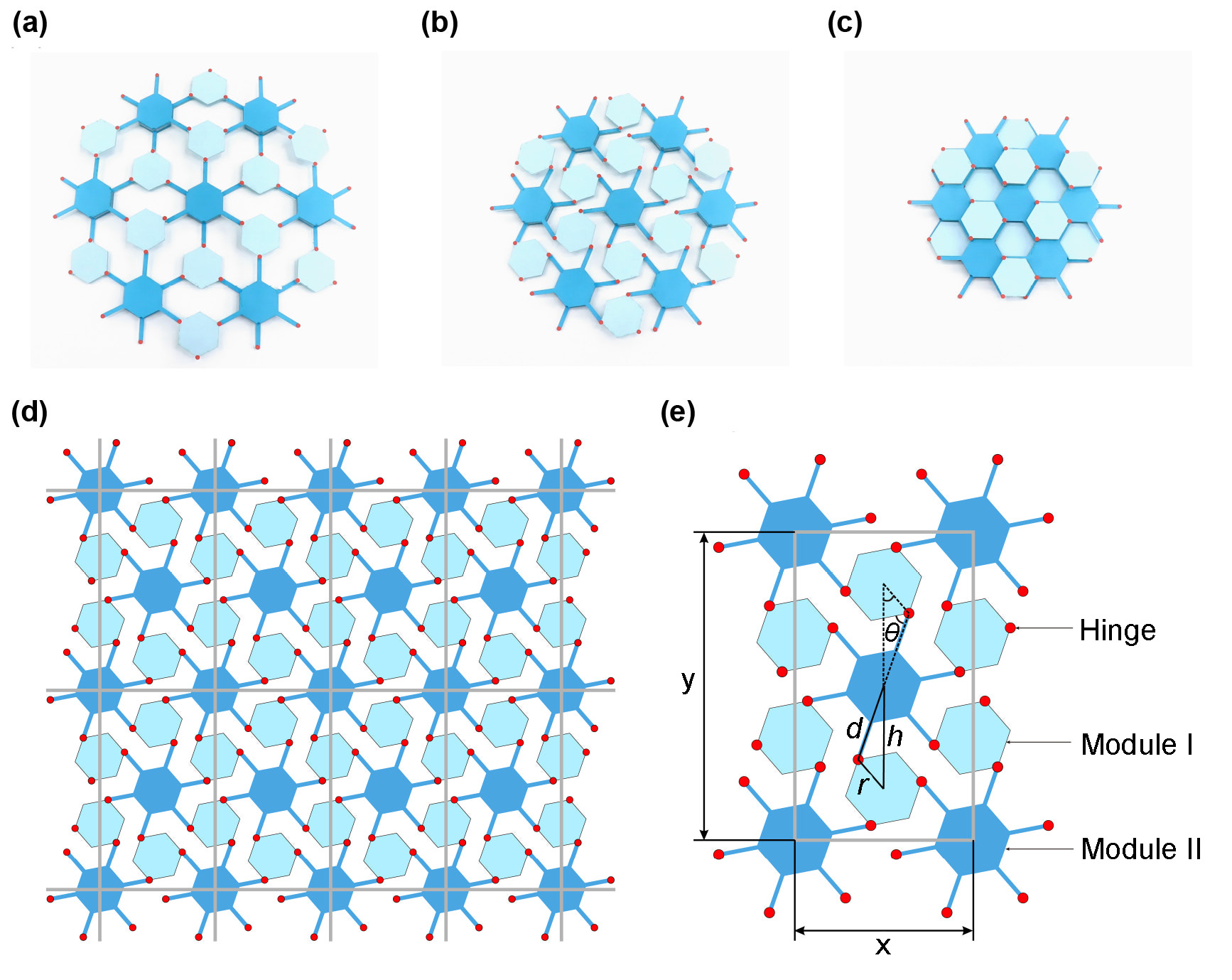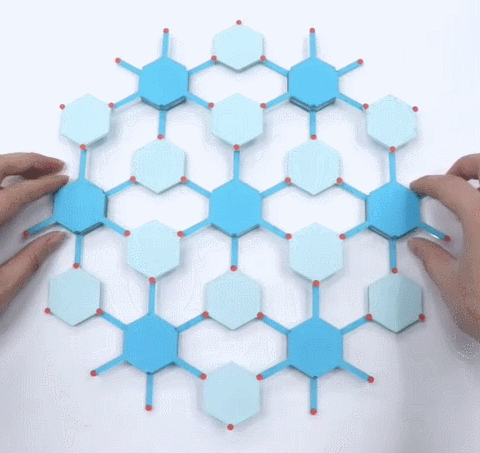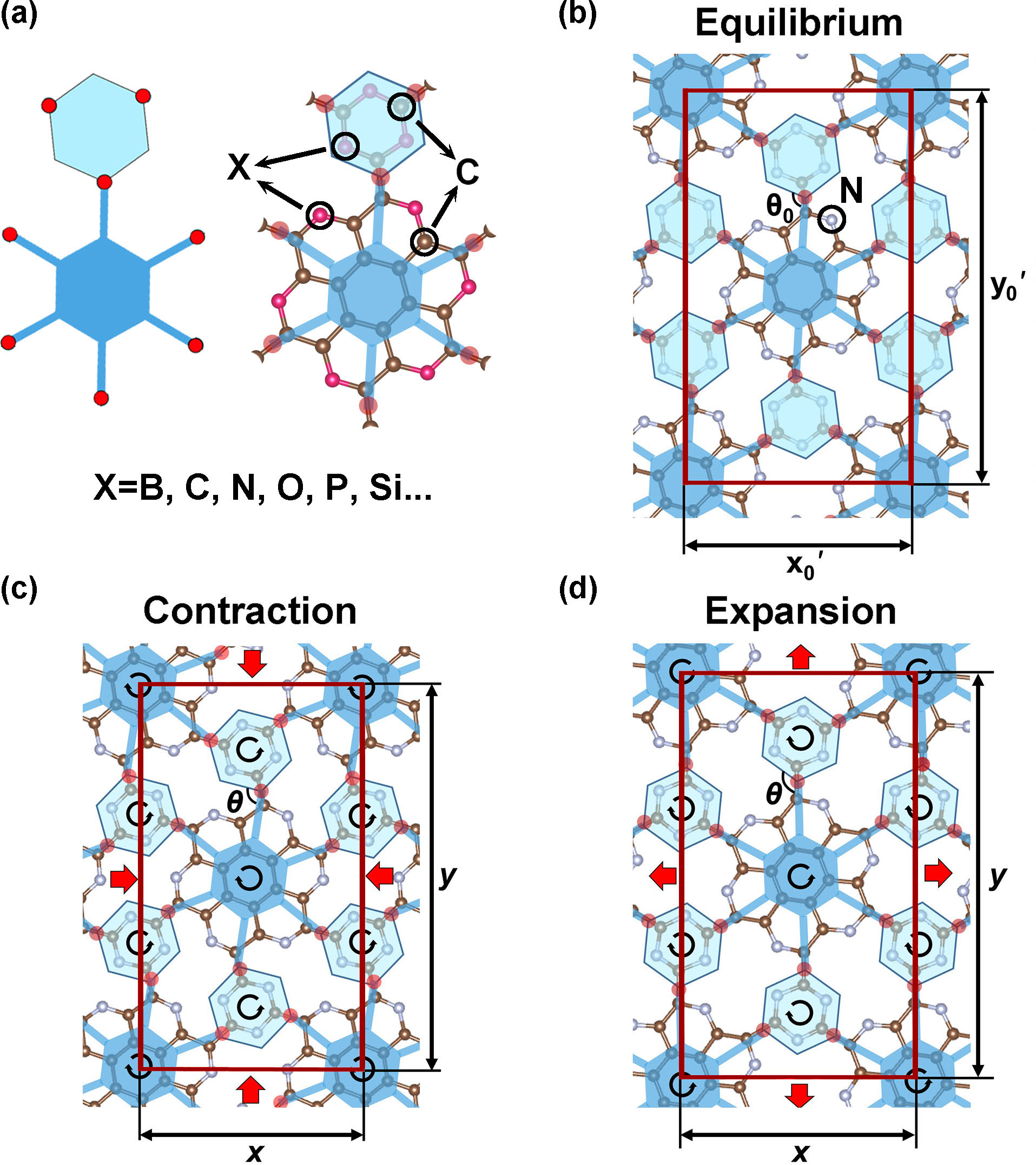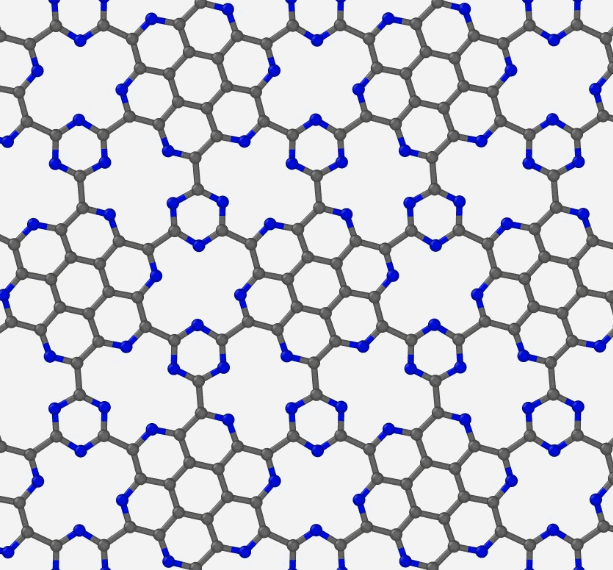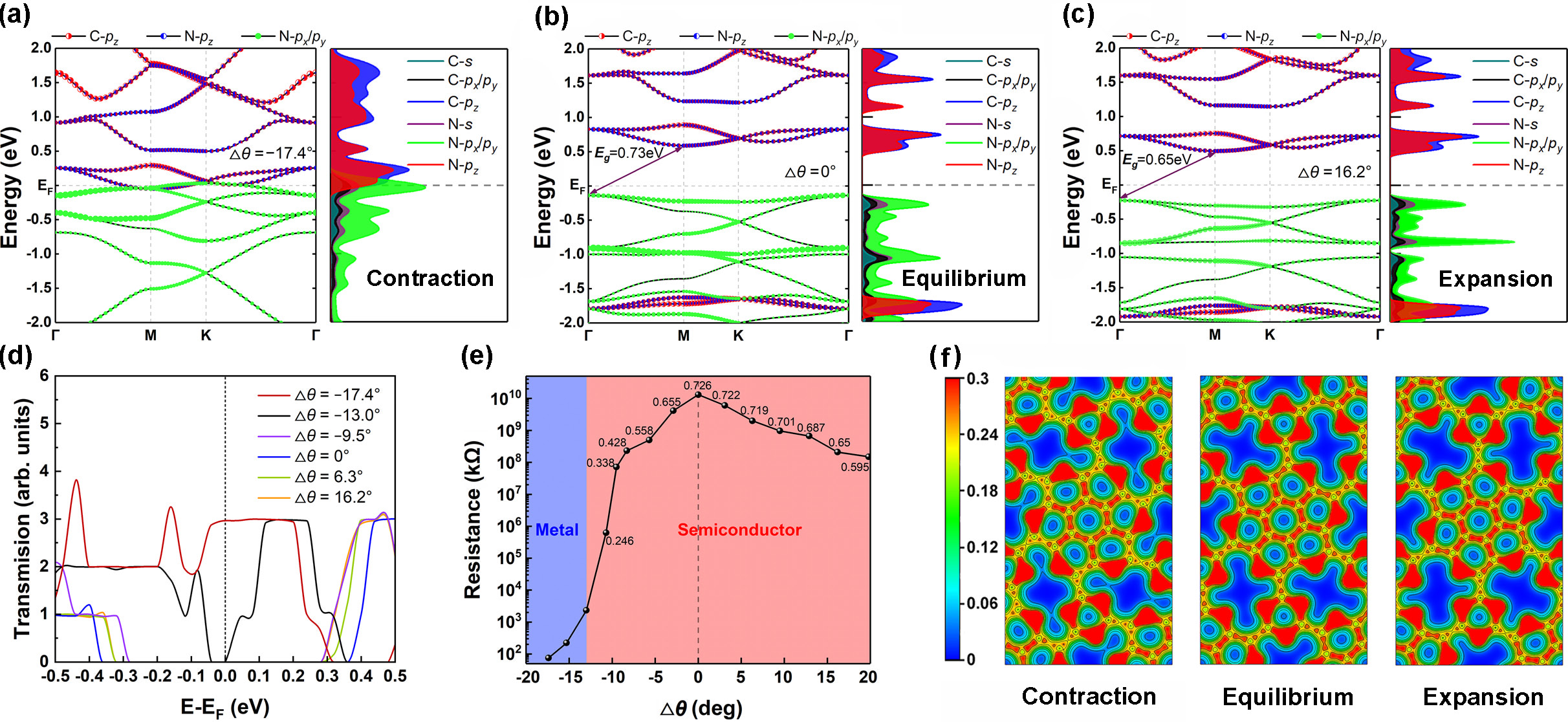Research
Team
Publications
News
|
New Publication: Kirigami-inspired thermal regulator
From: Date: 2023-02-12 Recently, Professor Xiangdong Ding and Associate Professor Zhibin Gao at Xi'an Jiaotong University, in collaboration with Professor Yan Chen at Tianjin University, have made important progress in the research of high-performance thermal management materials. They mapped a novel two-dimensional honeycomb kirigami mechanism to graphene and designed a nitrogen-doped porous graphene (NPG) metamaterial. Through first-principles calculations and molecular dynamics simulations, this metamaterial with a special topological deformation realized a metal-insulator transition by small strain, which changed the main heat carrier in the material and achieved a thermal switching ratio of 27.78 at 1% strain. The results were published in a famous physics journal (Phys. Rev. Applied 19, L011001 (2023)) with the title "Kirigami-inspired thermal regulator". The joint corresponding authors are Associate Professor Zhibin Gao, Professor Yan Chen and Professor Xiangdong Ding, and the joint first authors are Master student Hongyi Ouyang of Xi'an Jiaotong University and PhD student Yuanqing Gu of Tianjin University. Background With the rapid increase in manufacturing levels, electronic devices are becoming increasingly miniaturized and highly integrated. The continuous accumulation of heat leads to a large attenuation of the output power of the device, which cannot obtain best performance of the device. The excess heat may form a thermal wall in the electronic device resulting in the damage of the device. Therefore, the search for heat dissipation materials with high thermal conductivity has become a key research problem in the field of semiconductors and a key technology to further reduce the size of transistors following Moore's Law. In addition, for electronic devices used under extremely low or high temperature conditions such as in deep space and deep sea, the normal operation of the chip requires thermal insulation of the device, and in new energy vehicles, in order to ensure the efficiency and service life of the battery, it is also necessary to regulate its operating temperature in a moderate range. Hence, the development of high-performance thermal management devices is a key challenge for the further development of modern electronics, photonics, and waste heat utilization technologies. Highlights The authors first designed a two-dimensional honeycomb kirigami mechanism, as shown in Fig. 1, the two types of module units are arranged according to the corresponding geometric relationships and connected by a series of hinges, in which the Poisson 's ratio of this kirigami mechanism is calculated to be -1. As shown in Fig.2, after extrusion and stretching, it can fold and expand through the rotation of the modules. The hexagonal module was used as the main design unit which is like the graphene honeycomb structure to ensure the stability of the material. Indeed, this mechanism has enough pores to provide the deformation space. In the case of intermolecular force in the material, the corresponding deformation can also be achieved within a certain range. Fig. 1 The two-dimensional honeycomb kirigami mechanism Fig. 2 The folding-unfolding deformation of the kirigami mechanism Based on the above honeycomb kirigami mechanism, the design of the metamaterial was carried out by selecting a two-dimensional material, graphene, as the base of the honeycomb structure. Due to pores in the kirigami mechanism, different microstructures were selected to map with the units of the kirigami mechanism using porous graphene as a reference. As shown in Fig. 3, module I and module II are replaced by one honeycomb and a cluster including seven honeycombs respectively, in which the pink atoms are doped elements. Based on the topology and energy band structure of different element-doped metamaterials, the nitrogen element was identified as the best doping element through first-principles calculations, and this metamaterial was called nitrogen-doped porous graphene (NPG). As shown in Fig. 4, its corresponding folding-unfolding deformation behavior also occurred under external force, which is similar to the deformation of kirigami mechanism. Fig. 3 Mapping of kirigami assembly to metamaterials. Fig. 4 The folding-unfolding deformation of NPG. Based on the NPG, the corresponding device model was established, and the lattice thermal conductivity and electronic thermal conductivity were calculated by molecular dynamics and first-principles methods. As shown in Fig.5, the electronic thermal conductivity changes by 9 orders of magnitude under the folding deformation, but the lattice thermal conductivity does not change significantly, thus it can change the dominant type of heat carrier before and after deformation, which results in a thermal switching ratio of 27.78. Fig. 5 Thermal conductivity and thermal switch ratio of NPG Through first-principles calculations, as shown in Fig. 6, the band structure changes significantly during the deformation process. The band gap of NPG in the equilibrium state is 0.73 eV, and gradually decreases with folding deformation, for which the valence band and conduction band overlap in contraction state. According to the projected density of states and the charge density diagram in different states of NPG, it can be found that the spacing between the nitrogen atoms on the adjacent modules decreases rapidly, resulting in an increase in the overlap integral of the px and py orbitals. Therefore, the energy band width of valence band maximum gradually increases, and the electrons on these orbitals tend to delocalize, which leads to the dispersion of electrons, so that the metamaterial exhibits metal properties, and the metal-insulator transition results in a significant change in the thermal conductivity of the material. Fig. 6 Band structure, electronic transport properties and electronic structures of NPG. Conclusions In summary, this work exhibited the demonstration of mapping from kirigami assembly on NPG metamaterials at atomic scale, of which the thermal switching ratio reaches 27.79 under only 1% strain. This research promoted the development of high-performance thermal management devices, which will play essential roles in several fields such as nanoscale calorimeters and the thermal management of microelectronics. Moreover, this study provided a nanomaterial design paradigm to bridge the gap between kinematics and properties of metamaterials that motivates the development of high-performance thermal regulators.
Ouyang H#, Gu Y#, Gao Z*, Hu L, Zhang Z, Ren J, Li B, Sun J, Chen Y*, Ding X*. Kirigami-inspired thermal regulator. Physical Review Applied, 2023, 19(1): L011001. |
